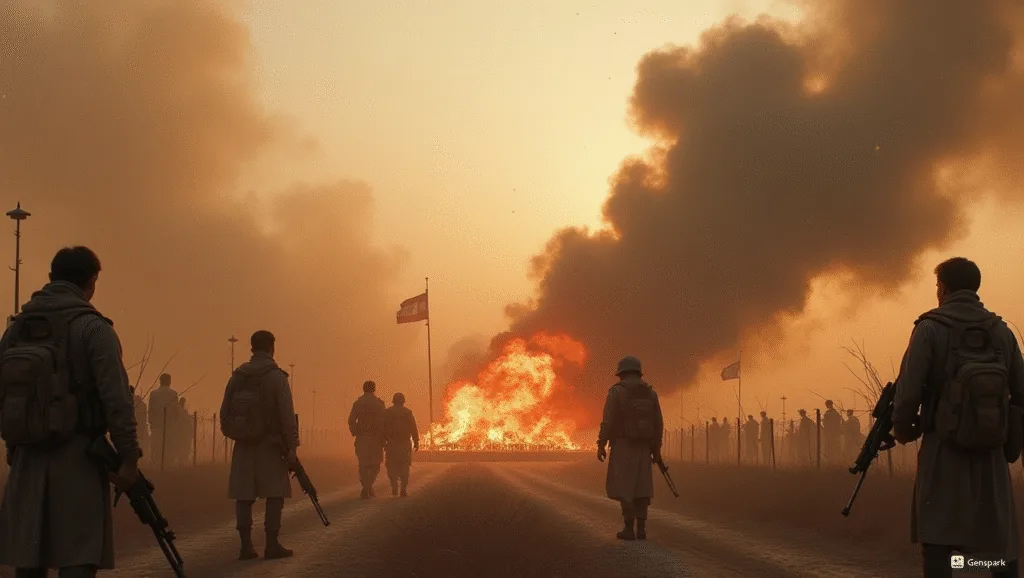Analysis of Pakistan-India Relations and War Potential and Current Situation Between Pakistan and India.
Current Situation Between Pakistan and India War
The relationship between India and Pakistan is currently at its most tense point in recent years. The tensions have escalated dramatically following the April 22, 2025 Pahalgam attack in Indian-administered Kashmir, where militants killed 26 people, mostly Hindu tourists.
In response to the attack, India has accused Pakistan of supporting cross-border terrorism and has taken several punitive measures:
- Suspended the Indus Waters Treaty
- Expelled Pakistani diplomats
- Closed borders
- Banned Pakistani nationals from traveling to India
- Canceled previously issued visas.
Pakistan has denied any involvement and retaliated by
- Suspending the Simla Agreement
- Restricting trade
- Closing its airspace to Indian aircraft
- Suspending visas for Indian nationals.
Border skirmishes between Indian and Pakistani forces began along the Line of Control on April 24, with both sides exchanging small arms fire across multiple positions.
Could There Be a War Between Pakistan and India?
The prospect of war between India and Pakistan is a serious concern given the current escalation. Several factors indicate the potential for armed conflict:
- Ongoing Border Skirmishes: There have already been exchanges of gunfire along the Line of Control for four consecutive nights, indicating military engagement has begun.
- Strong Political Statements: Pakistan’s Defense Minister Khawaja Asif has warned that a military incursion by India is “imminent,” suggesting Pakistan is preparing for a potential attack.
- Military Posturing: India has test-fired missiles and deployed naval assets, showcasing its ability to carry out strikes.
- Diplomatic Breakdown: The suspension of key treaties and withdrawal of diplomats indicates a severe breakdown in diplomatic channels that could normally help de-escalate tensions.

However, several factors also make a full-scale war less likely:
- Nuclear Deterrence: Both countries possess nuclear weapons, creating a significant deterrent against full-scale war.
- International Pressure: The United States and China have urged de-escalation, and international pressure will likely continue to push for diplomatic solutions.
- Economic Consequences: Both countries would face severe economic repercussions from a prolonged conflict.
Who Would Likely Attack First?
Based on current dynamics and historical patterns:
- India’s Potential First Move: India has historically responded to terrorist attacks with limited military strikes, as seen after the 2016 Uri attack (surgical strikes) and the 2019 Pulwama attack (Balakot airstrike).
- India’s Cold Start Doctrine: India developed the Cold Start doctrine specifically to allow quick, limited military action against Pakistan without crossing the nuclear threshold. This doctrine enables India to mobilize quickly and conduct limited retaliatory strikes, which could be employed in the current situation.
- Pakistan’s Stance: Pakistan is currently in a defensive posture, warning of retaliation if attacked. Pakistan’s defense minister has stated that Pakistan will only use nuclear weapons if its “existence is threatened”.
Potential Targets From India’s Side:
- Some infrastructure in Pakistan-administered Kashmir
- Military facilities near the Line of Control
- Military camps
- Limited strikes against military installations deeper inside Pakistan
From Pakistan’s Side:
- Military installations near the border
- Forward operating bases in Indian-administered Kashmir
- Strategic infrastructure in border states
- Counter-strikes against Indian positions that initiated attacks
Conventional vs. Nuclear Conflict
The question of whether a potential conflict would remain conventional or escalate to nuclear weapons use is critically important:
- Pakistan’s Nuclear Doctrine: Unlike India, Pakistan has not declared a “No First Use” policy for nuclear weapons. Pakistan maintains the option of using nuclear weapons first, particularly in case of an overwhelming conventional attack by India that threatens Pakistan’s territorial integrity. This stance is part of Pakistan’s strategy to offset India’s conventional military superiority.
- Tactical Nuclear Weapons: Pakistan has developed tactical nuclear weapons (battlefield nuclear weapons with lower yields) specifically as a counter to India’s Cold Start doctrine. These weapons are designed to be used on the battlefield against advancing Indian forces, lowering the threshold for nuclear use.
- Escalation Risks: Military analysts fear that what begins as a limited conventional conflict could escalate to nuclear use if:
- Pakistan perceives an existential threat from Indian conventional forces
- Communication breaks down between the countries
- Either side miscalculates the other’s red lines
According to security experts, a likely scenario would involve India attempting to conduct limited conventional strikes under the nuclear threshold, while Pakistan might threaten nuclear use to prevent further escalation. The “nuclear capability of both countries serves as a big deterrent to a full-fledged confrontation”.
Conclusion
The situation between India and Pakistan is extremely tense following the Pahalgam attack. While a limited military conflict appears increasingly likely, with India more probable to initiate action, both sides have strong incentives to prevent escalation to full-scale war or nuclear conflict.
The nuclear dimension adds significant complexity to the crisis, with Pakistan’s lower threshold for nuclear use serving as a deterrent against major Indian military operations. International diplomatic efforts will be crucial in the coming days to prevent further escalation.
The current situation resembles previous crises between the two countries but with heightened tensions. If conflict does occur, it will likely follow the pattern of limited military engagements with both sides careful to avoid crossing nuclear thresholds, despite the increased risk of miscalculation.
Read Another Article: Beijing’s Strategic Move: South China Sea



